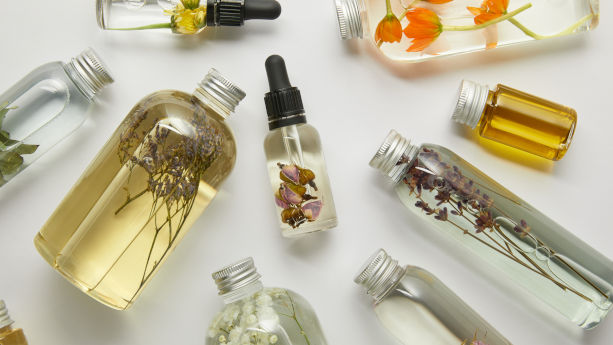
Cosmetics made for the EU market must comply with certain substance restrictions. Some substances are prohibited, while limits apply to others. In some cases, there are also positive substance restrictions, in the sense that only certain substances can be used.
In short, understanding the status of the substances used in your cosmetic products is essential when selling in the EU. This guide takes a closer look at these restrictions in the Cosmetic Products Regulation, REACH, and the POPs regulation.
Methodology: In this guide we provide examples of restricted substances that are relevant to cosmetics, taken from the following sources:
a. Annex II to VI and Articles 15 to 17 of the Cosmetic Products Regulation
b. REACH Regulation
c. POPs Regulation
d. Toy Safety Directive
e. Commission Decision (EU) 2021/1870 establishing the EU Ecolabel criteria for cosmetic products and animal care products
Content Overview

FREE CONSULTATION CALL (US, EU & UK)
- Request a free 30-minute call with Ivan Malloci to learn how we can help you with:
- Find product requirements
- Certification and labeling
- Lab testing
Cosmetic Products Regulations
Annex II: Prohibited Substances
Annex II of the Cosmetic Products Regulation contains a list of substances prohibited from use in cosmetic products. We list below some examples of these substances:
- Trichloroacetic acid
- Allyl isothiocyanate
- Anthracene oil
- Cobalt benzenesulphonate
- Barbiturates
- Chloroform
Annex III: Restricted Substances
Annex III of the Cosmetic Products Regulation contains a list of substances subject to various restrictions when used in cosmetic products. We list a few of those substances and their restrictions below.
| Substance | Product type / Body part | Maximum concentration | Other restrictions |
|
Thioglycolic acid and its salts |
Depilatories |
5% in ready-for-use |
pH 7 to 12.7 |
|
Ethanol, 2,2′-[(2-nitro-1,4-phenylene)diimino]bis-(9CI) |
Hair dye substance in non-oxidative hair dye products |
1.5% |
The maximum nitrosamine content is 50 μg/kg. |
|
1,3-Bis (hydroxymethyl)imidazolidine-2-thione |
Nail products |
2% |
pH to be less than 4 |
|
Strontium hydroxide |
pH adjuster for depilatories |
3.5 % (as strontium) |
pH to be less than or equal to 12.7 |
Warnings and conditions
Annex III also lists warnings and conditions of use for some substances. For example, the condition of use for Zinc 4-hydroxybenzene sulphonate is “Avoid contact with eyes”.
Annex IV: Colorants
Annex IV of the Cosmetic Products Regulation lists substances only permitted when used as colourants in cosmetic products. We list below a few such colourants and their respective restrictions.
| Substance | Product type / Body part | Colour | Maximum concentration | Other conditions |
|
1-[(2-Chloro-4-nitrophenyl)azo]-2-naphthol and its insoluble barium, strontium and zirconium lakes, salts and pigments |
N/A |
Red |
3% |
N/A |
|
4-[(4-Amino-m-tolyl)(4-imino-3-methylcyclohexa-2,5-dien-1-ylidene)methyl]-o-toluidine monohydrochloride |
Rinse-off products |
Violet |
5 ppm |
N/A |
|
3′,6′-Dihydroxy-4′,5′-dinitrospiro[isobenzofuran-1(3H),9′-[9H]xanthene]-3-one |
N/A |
Orange |
1 %, when used in lip products |
Only in free acid form, when used in lip products |
|
1-Anilino-4-hydroxyanthraquinone |
Rinse-off products |
Violet |
N/A |
N/A |
Annex V: Preservatives
Annex V of the Cosmetic Products Regulation contains a list of substances permitted when used as preservatives in cosmetic products. Here are a few such preservatives and their restrictions:
| Substance | Product type / Body part | Maximum concentration | Other conditions |
|
Biphenyl-2-ol |
Rinse-off products Leave-on products |
0.2% (as phenol) 0.15% (as phenol) |
N/A |
|
Thiomersal |
Eye products |
0.007 % (of Hg) |
N/A |
|
5-Bromo-5-nitro-1,3-dioxane |
Rinse-off products |
0.1% |
Avoid formation of nitrosamines |
|
Methanol, (phenylmethoxy-) |
Rinse-off products |
0.15% |
N/A |
Warnings and conditions
Annex V also lists warnings and conditions of use for some of its listed substances. For example, the warning for the substance Glutaraldehyde (Pentane-1,5-dial), is “Contains glutaral”.
Annex VI: UV filters
Annex VI of the Cosmetic Products Regulation contains a list of substances only permitted for use as UV filters in cosmetic products. We list a few such substances below, as well as their restrictions.
| Substance | Product type / Body part | Maximum concentration | Other conditions |
|
2-Hydroxy-4-methoxy-benzophenone/Oxybenzone |
Face products, hand products, and lip products |
6% |
Maximum 0.5% to protect product formulation |
|
2-Cyano-3,3-diphenyl acrylic acid, 2- ethylhexyl ester/Octocrylene |
Propellant spray products |
9% |
N/A |
|
Dimethicodiethylbenzalmalonate |
N/A |
10% |
N/A |
|
Zinc oxide |
N/A |
5% |
Not for use in applications that may be inhaled and exposed to the user’s lungs |
Warnings and conditions
This Annex requires the provision of warnings and conditions of use for some substances. One of those substances is titanium dioxide, and its condition of use is “Not to be used on the lips”.
Restrictions on CRM substances
Article 15 of the Cosmetic Products Regulation prohibits the use of substances that are deemed carcinogenic, mutagenic or toxic for reproduction (CMR), of category 1A or 1B, under Part 3 of Annex VI to the CLP Regulation. Here are a few examples of such substances taken from the CL Inventory:
- Aluminium lithium hydride
- n-hexyllithium
- boron tribromide
- trialkylboranes, liquid
Nanomaterials
Nanomaterials are materials that cannot dissolve, remain in the body, are purposely manufactured, and are between 1–100 nm in size.
Article 16 of the Cosmetic Products Regulation sets notification requirements for nanomaterials.
The responsible person must submit a notification regarding cosmetic products containing nanomaterials six months before placing those products on the market.
Traces of prohibited substances
Article 17 permits the unintentional presence of a small quantity of a banned substance in a cosmetic product if:
a. The substance’s presence is technically unavoidable in good manufacturing practice and;
b. The presence of that substance complies with the requirements in Article 3 (e.g., is safe for human health)
The presence of the banned substance might result from the following:
- Impurities of synthetic or natural ingredients
- Manufacturing process
- Migration from packaging
- Storage
REACH
The REACH Regulation covers substances, mixtures, and articles, including cosmetics. We list below a few substances that are restricted by REACH and can be found in cosmetic products.
| Substance | Type of restriction | Maximum concentration | Covered cosmetics |
|
Microplastics |
Annex XVII |
0.01% |
Cosmetics listed in entry 78 of Annex XVII to REACH, including:
|
|
Nonylphenol |
Annex XVII |
0.1% |
Cosmetic products and personal care products except spermicides |
|
Nonylphenol ethoxylates |
Annex XVII |
0.1% |
Cosmetic products and personal care products except spermicides |
The restrictions on microplastics are set by Regulation (EU) 2023/2055, which amends Annex XVII to REACH to restrict the use of microplastics to not more than 0.01% by weight, including in some types of cosmetics, such as the ones listed in the above table.
The restrictions regarding different cosmetic products take effect on different dates, as specified on entry 78 of Annex XVII to REACH. For example, they take effect on 17 October 2035 for the following products:
- Lip products
- Nail products
- Make-up products
For the lip, nail, and make-up products, there are also labelling requirements that apply between 17 October 2031 and 16 October 2035, which is one day before the restrictions take effect.
Such products should bear the statement “This product contains microplastics”.
POPs Regulation
The POPs Regulation prohibits the use of certain persistent organic pollutants, including when these substances are found in cosmetics. Here, we list a few examples of prohibited substances that are relevant to cosmetics:
- Perfluorooctanoic acid (PFOA)
- Toxaphene
- Heptachlor
- Endrin
- Dieldrin
Toy Safety Directive
The Toy Safety Directive sets restrictions for certain fragrances used in cosmetic toys under Annex II “Particular Safety Requirements”, Part III “Chemical Properties”, Points 10 and 12.
The directive prohibits toys from containing substances such as:
- Benzyl cyanide
- Dihydrocoumarin
- Ethyl acrylate
- Hexahydrocoumarin
Here are a few such substances restricted to a maximum of 100 mg/kg in toys, as their presence may be unavoidable under good manufacturing practice:
- Anisyl alcohol
- Benzyl benzoate
- Citronellol
- Linalool
Furthermore, some fragrances are permitted in cosmetic kits, provided said fragrances are labelled on the packaging, and the packaging states the relevant warning. Here are some examples:
- Amyl cinnamal
- Citral
- Eugenol
- Tree moss extracts
Commission Decision (EU) 2021/1870 establishing the EU Ecolabel criteria for cosmetic products and animal care products
This regulation, which sets EU Ecolabel criteria, prohibits the use of several substances in cosmetic products. Here are some examples:
- Microplastics and microbeads
- Deltamethrin
- Phthalates
- Resorcinol
















 Create compliance checklists for your product (US, EU & UK)
Create compliance checklists for your product (US, EU & UK) 20+ product certificate templates
20+ product certificate templates Create label files
Create label files Book product testing
Book product testing